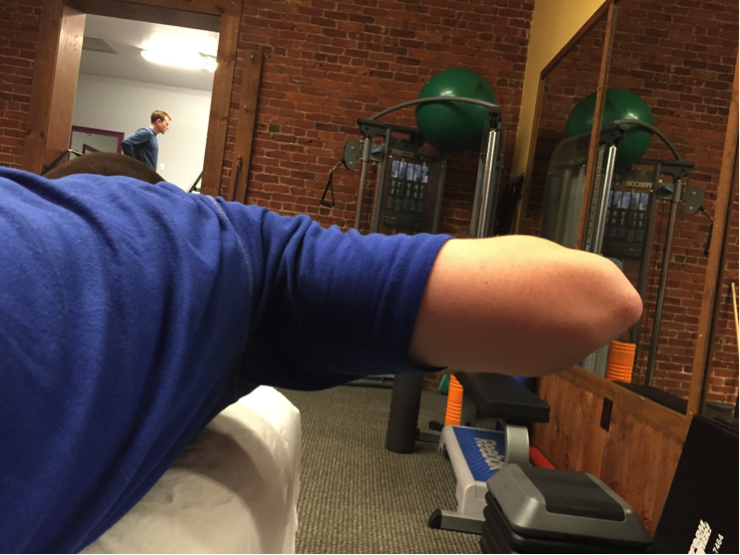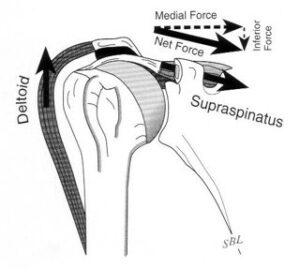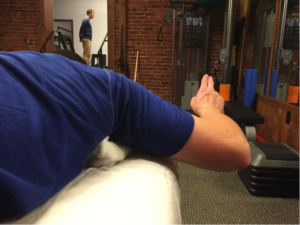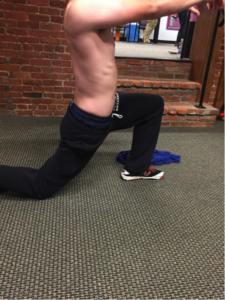
3 Tips for Improving Shoulder Health and Performance
Today’s guest post comes from my good friend and Elite Baseball Mentorships colleague, Eric Schoenberg. Enjoy! -EC
It is well documented that shoulder pain/injury is a primary reason for lost time in the gym and on the baseball field. Often times, the culprit is not poor exercise selection, but instead poor exercise execution. Most high level performers are going to do the work that we ask them to do, the issue is whether they are practicing getting better or practicing getting worse.
The following three tips will be useful for any strength coach or physical therapist to help ensure optimal function of the shoulder.
1. Understand and Appreciate Relative Stiffness.
There are several examples of relative stiffness around the shoulder that can result in faulty movement, pain and/or decreased performance.
A primary culprit occurs when the relative stiffness of the deltoid is greater than the rotator cuff. The result of this will be superior translation of the humeral head.

This can lead to undersurface rotator cuff tears, biceps tendon irritation, cyst formation, inferior glenohumeral ligament tears, or humeral head abnormalities – all of which are common to throwers.
Consider this when attempting to strengthen the cuff. Check to see if the humerus is in extension, as demonstrated in this photo. This faulty “elbow behind the body” pattern will lead to over-recruitment of the posterior deltoid:

You also want to cue the athlete away from excessive horizontal abduction, as demonstrated in the next photo. Prone external rotation with no support results in increased use of deltoid to support the arm against gravity:

Here it is corrected with support:

More times than not, we see athletes doing the correct exercise with the wrong execution and getting poor results. We want to avoid allowing an athlete to practice getting better at moving incorrectly.
2. Stop rowing so much, especially if your rowing technique is incorrect!
Rowing variations are generally the safest and easiest upper body exercises to program. However, even though a row is usually pain free, it can sometimes lead to patterns that result in injury down the road.
For example: If the rhomboids and lats are too stiff, you will see limited upward rotation of the scapula. Regardless of how much you strengthen the serratus anterior and lower trapezius, these smaller muscles will never match the force production of the lats and rhomboids.
With this in mind, the best “fix” is to increase stiffness and muscle performance of serratus and lower trapezius while simultaneously decreasing the stiffness and use of the lats/rhomboids.
This can be done by modifying the way we row. In this great video, EC discusses how to correct the row and ensure the scapula is moving properly on the ribcage with both phases of the rowing pattern.
In addition, we should program pressing or reaching exercises such as landmines, kettlebell presses, overhead carry variations.
3. Don’t let good lower body days double as “bad” upper body days.
We sometimes see athletes come in complaining about an increase in symptoms following lower body days. They will report something like “I don’t know what I did to my shoulder; I lifted lower body yesterday.”
By now we know that a common cause of shoulder pain is the scapula being too depressed and downwardly rotated.
If an athlete performed deadlifts, back squats, or any lower body exercise where the weight was held by their sides (DB reverse lunges, step ups, RDLs, Bulgarian split squats, etc.), chances are they were feeding the pattern of depression and downward rotation.
Taking this a step further, we commonly see these exercises resulting in postures and stabilization strategies that present with increased lumbar lordosis and anterior pelvic tilt. When this goes uncorrected, scapular alignment suffers. Here’s a look at a reverse lunge with excessive hip extension, lumbar extension, and anterior pelvic tilt:

Remember, there is no “corrective’ in the world that will counteract the stress of carrying 120-pound DBs by your side while training on a lower body day. This does not mean that you shouldn’t program it; instead, it means that we should just be aware of the consequences.
The solution to this is to consider alternate loading strategies (such as a Safety Squat Bar, KB Goblet set-up, or weight vests) that will allow the shoulder girdle to be freed up and positioned more optimally. If we pair this with consistent attention to proper alignment and movement strategies, we can use lower body days as another opportunity to enhance shoulder function.
About the Author
Eric Schoenberg (@PTMomentum) is a physical therapist and strength coach located in Milford, MA where he is co-owner of Momentum Physical Therapy. Eric is addicted to baseball and plays a part in the Elite Baseball Mentorship Seminars at Cressey Sports Performance. He can be reached at eric@momentumpt.com.



